1896-1935 Billy Sunday Revivals
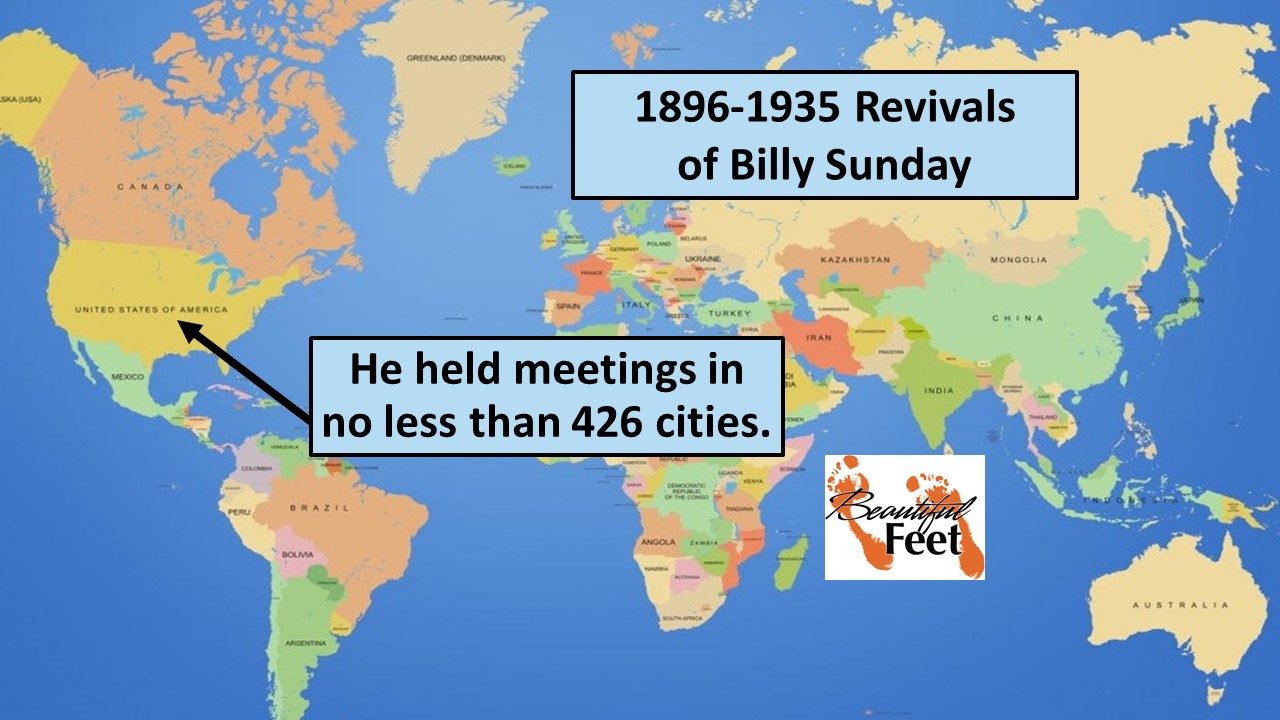
Billy Sunday evangelistic campaigns could last up to 10 weeks in one city, with meetings being held 1-3 times per day.
Introduction
This article is about well-planned, orchestrated, and successful evangelistic campaigns conducted by Billy Sunday between the years of 1896 and 1935.
It will be recognized that these orchestrated evangelistic events, though they did have a focus on the unconverted, did indeed lead to genuine revivals of individual Christians, congregations, and entire communities.
Evangelistic Campaigns (orchestrated evangelistic events)
Beginning with Charles G. Finney in the early 1800s, mass evangelistic efforts have been developed and expanded on. There was a succession of very prominent evangelists over the years and they all drew from the experiences of the ones preceding them, often by having worked directly with their predecessor, or being highly influenced by them:
► Charles G. Finney (1792-1875)
► Dwight L. Moody (1837-1899)
► R. A. Torrey (1856-1928)
► John W. Chapman (1859-1918)
► Billy Sunday (1862–1935)
► Billy Graham (1918-2018)
In this account we will focus on Billy Sunday, who received his experience with evangelistic campaigns by working for John W. Chapman from 1893-1896.
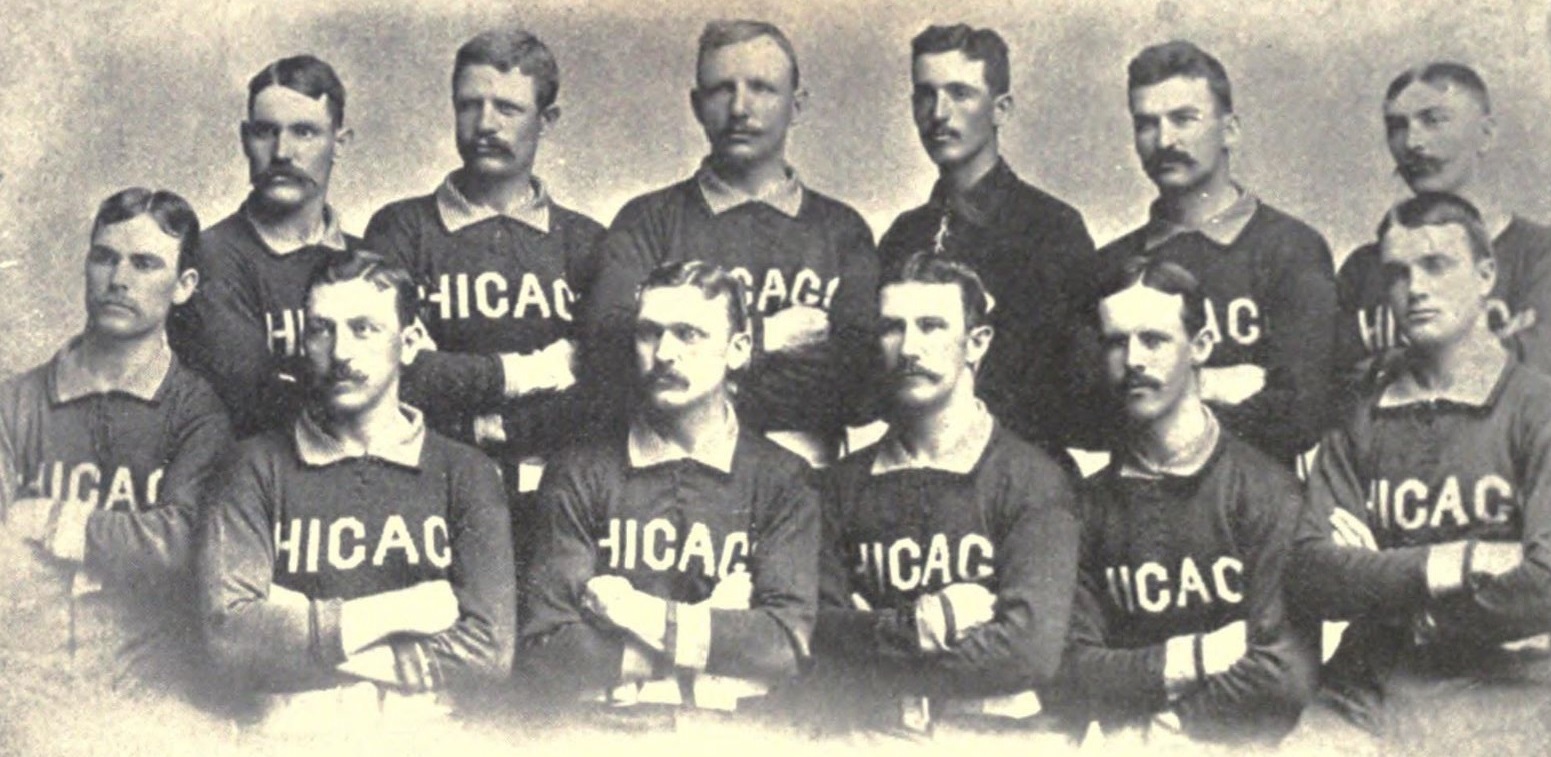
Chicago White Stockings (Cubs): Billy Sunday, first row, far right.

Billy Sunday, when
he played for the
Pittsburgh Alleghenys
(Pirates)
Introduction to Billy Sunday
Billy Sunday (1862-1935) was possibly the most famous evangelist in the early 1900s. His ministry resulted in 1,250,000 conversions to Christ.
Having been a successful professional baseball player, Sunday used this fame in all his advertisements for his events, as well as in his preaching, as it connected well with his audience.
After leaving his baseball career in 1891, he worked for the YMCA till 1893, then became the full-time assistant to John W. Chapman. When Chapman returned to pastoring a church in 1896, Sunday started his evangelistic work, ministering in churches and town halls throughout Iowa and Illinois.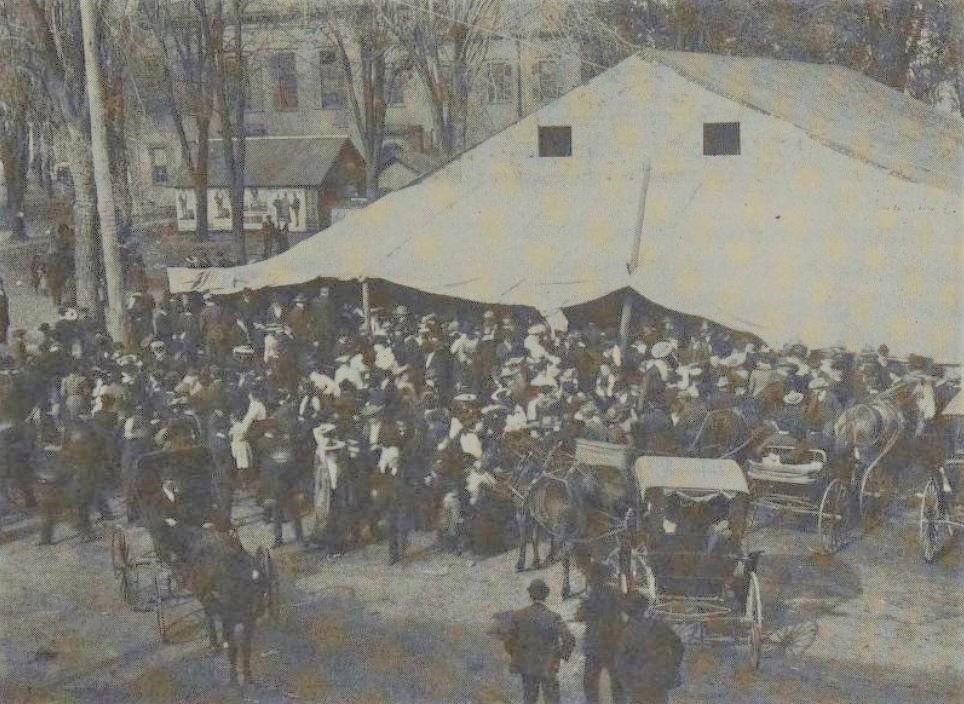
One of the first Billy Sunday campaigns, using a tent.
Carthage, Illinois (1903)

Billy Sunday
Education and Theme for Life
Though he never attended a seminary, it didn’t stop Sunday from being one of the most sought-after evangelists in the USA.
If Sunday had a theme for his ministry, it would be that he would always speak against the sins associated with alcohol, illustrated in this quote of his:
Whiskey and beer are all right in their place, but their place is in hell.
Construction of Temporary Tabernacles
In October 1906, while holding a meeting in Salida, Colorado, a snow storm destroyed the tent the meetings were being held in.
This led Sunday to do what other well-known evangelists preceding him had done, and that was constructing temporary buildings (tabernacles) in which he conducted his meetings. After his evangelistic campaign in a community came to an end, the buildings were dismantled and the lumber sold.
► The first tabernacle built was in Elgin, Illinois. It had a seating capacity for 3,000. The average size of tabernacles built for his use after this had a seating capacity of 7,000. In the larger cities the tabernacles were built for a seating capacity reaching 18,000.
► These tabernacles were built prior to his arrival in the town that invited him—at the expense of the local churches in that community.
► Another benefit of the tabernacle construction was that it united a community in a type of “barn raising” effort, creating lots of unity as the people worked together on the project.
► Still another benefit of the tabernacle construction was that it was a status symbol. It was common knowledge that only major evangelists were known to have such buildings constructed prior to their arrival in a city. This brought the community churches enhanced promotional leverage.
► Most of these tabernacles were equipped with heating and electric lights.
► The floors of the newly constructed tabernacles were layered in sawdust to soften footsteps. With no electronic voice amplification, this was a necessity. When Sunday would give an invitation to profess Christ as their Savior, and to come to the front to make a public declaration, the people would be “hitting the sawdust trail.” That term became a metaphor for someone turning from their sins and following Jesus.
► Childcare was provided so disturbances from children could be avoided. At the beginning of each meeting Billy Sunday would insist on silence so his voice would be able to be heard by the many thousands that were assembled.
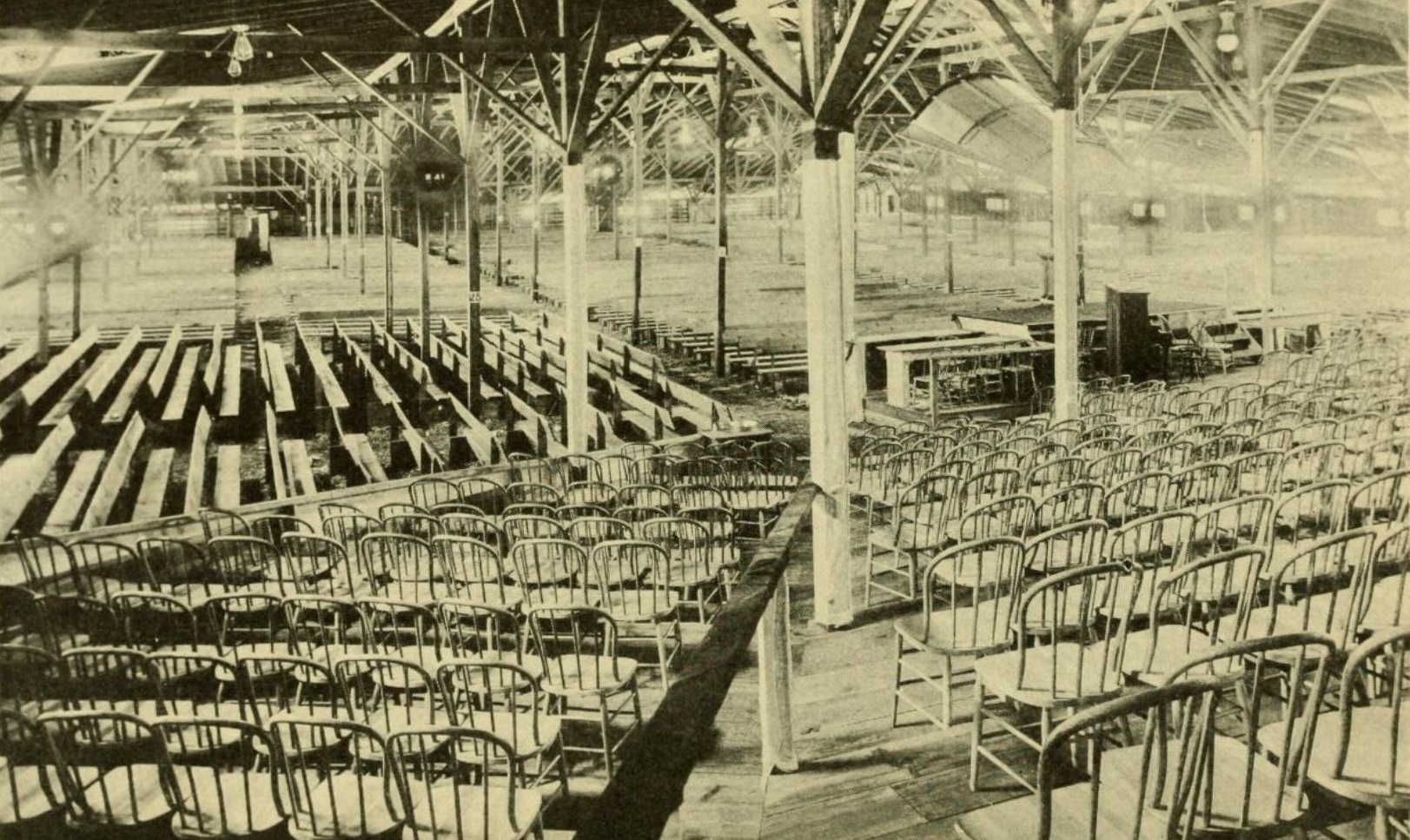 Inside the tabernacle at Scranton, Pennsylvania. This was the typical layout of all the tabernacles. The podium can be seen to the right.
Inside the tabernacle at Scranton, Pennsylvania. This was the typical layout of all the tabernacles. The podium can be seen to the right.
Marketing Similar to a Circus
Similar to how a circus would make plans to visit a community, with all the promotion that precedes them, Billy Sunday’s paid staff, reaching up to 26 people, would be living in cities many months ahead of time, making arrangements for his visit.
Typical Responsibilities of the Advance Staff
► Coordinate Prayer: Prior to the 1916 Boston Campaign, there were 6 weeks of prayer meetings. This was 7,402 home prayer meetings, totaling well over 100,000 people praying. Toward the end of that campaign, in January 1917, there had been an aggregate attendance in prayer meetings reaching 630,828 people.
► Plan and conduct advertisement.
► Train personal workers (those who would follow up on new converts).
► Assemble a choir.
► Assemble and train ushers.
► Oversee the construction of the tabernacle.
► Prepare for daily meetings in schools and shops to encourage participation at the meetings.
► Arrange for a volunteer medical team to be present during the meetings.
► Arrange for volunteer fire fighters to be prepared for emergencies.
► Coordinate with the local police for security and crowd control.
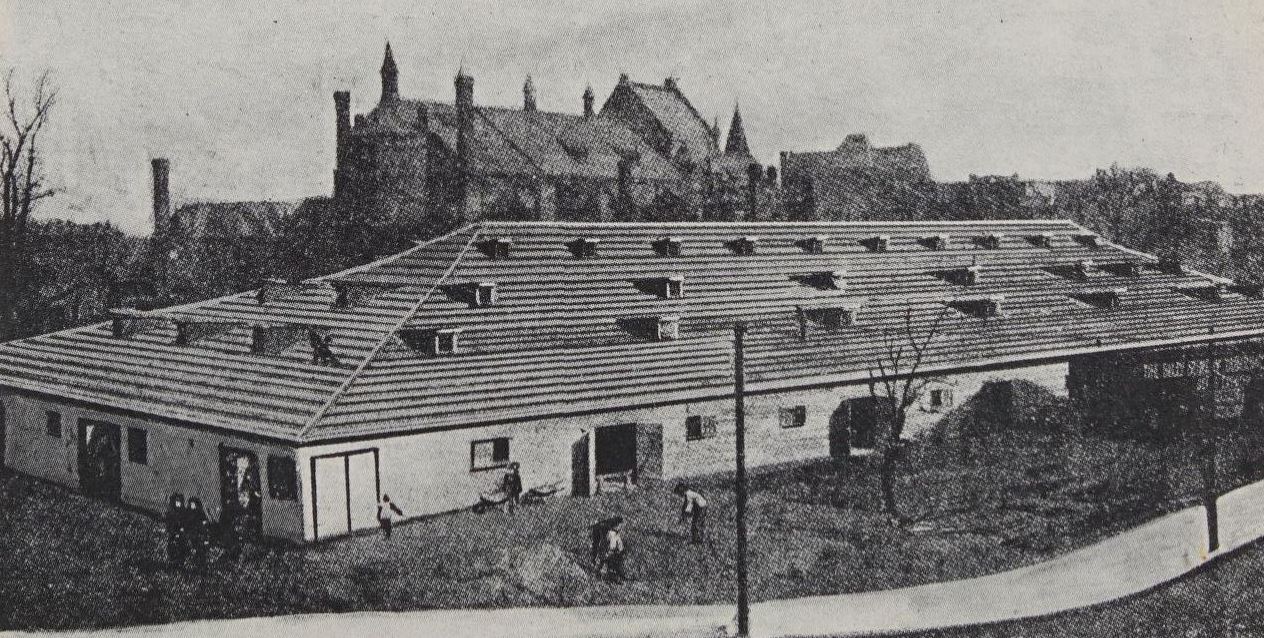
The 7,000 seat Cincinnati, Ohio, Tabernacle
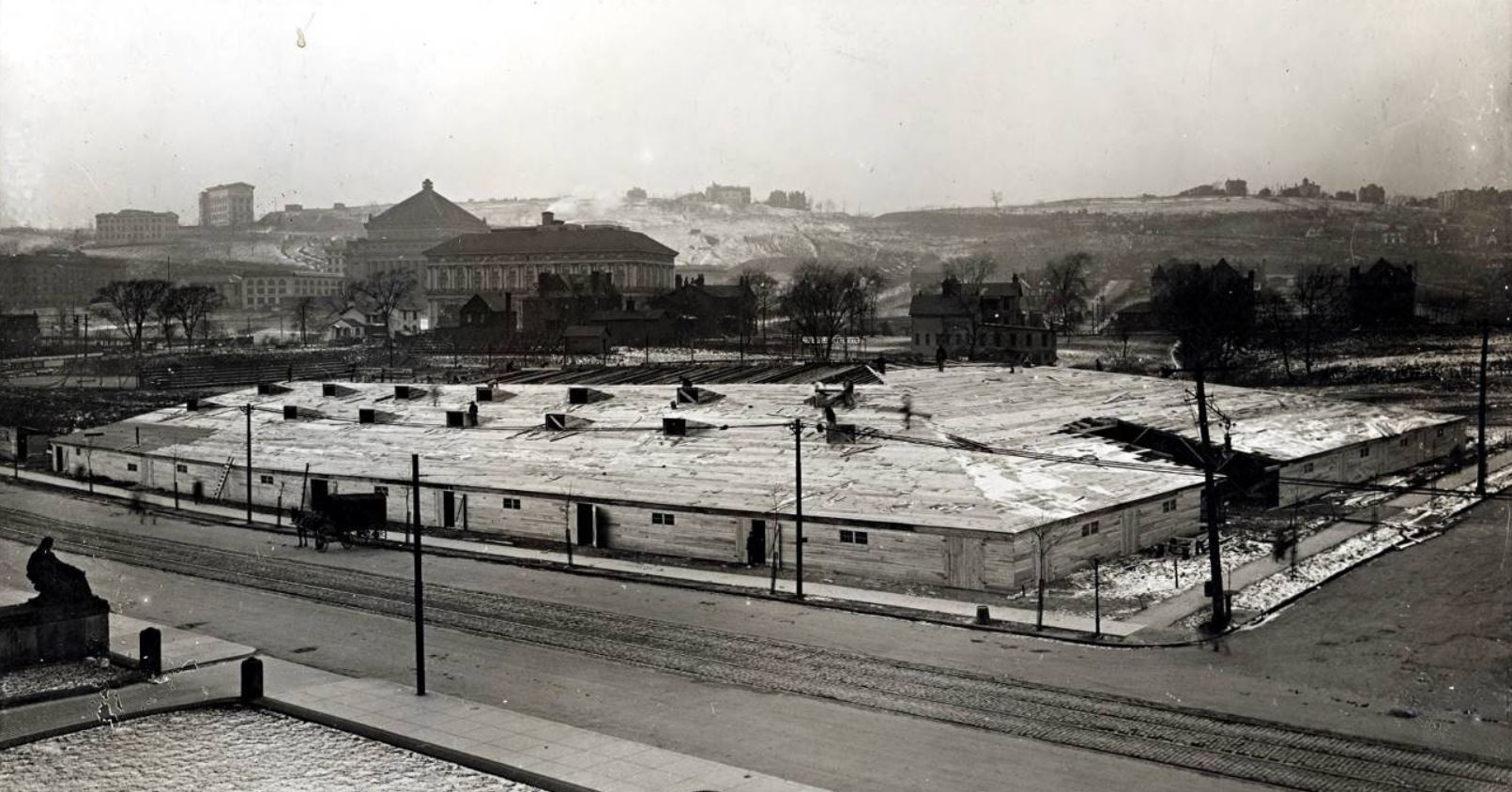
The 15,000 seat Pittsburg, Pennsylvania, Tabernacle
Popularity
By 1913 Sunday had become a national phenomenon. Entire sermons would be printed in newspapers of the cities in which he was preaching. The news of the meetings during WWI would often surpass the news associated with the war.
► Overflow buildings were used, as the seating in the tabernacles was often insufficient.
Fainting and Being Carried Out of Meetings
There were times when the conviction power of the Holy Spirit was so strong that people would have to be carried out of the building. This was caused when individuals felt the weight of their sin, and became physically incapable to bearing up under it.
Though there were more, we found 426 locations where Billy Sunday conducted evangelistic campaigns. The image reflects the number of cities in each state where campaigns were held. Some cities held multiple campaigns during different years.
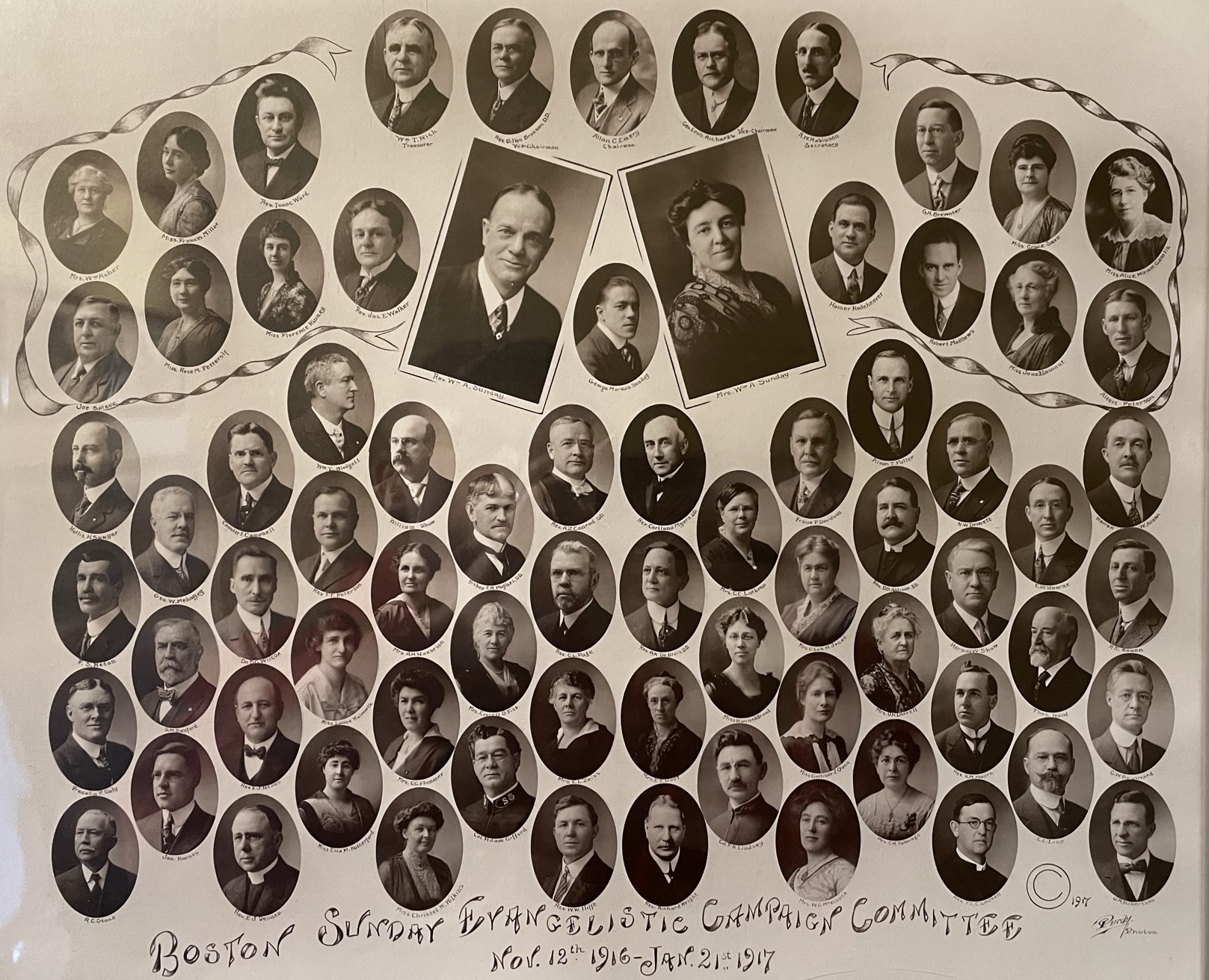
Boston: Sunday Evangelistic Campaign Committee
Example Campaign
Boston (Nov. 12, 1916 – Jan. 21, 2017)
There were nightly meetings during the campaigns, as well as three, and sometimes more, meetings on Sundays. Participating churches closed their doors on Sundays and attended the meetings. There was also an assortment of other meetings held, specifically for women, for men, and for new converts. The Boston campaign lasted 10 weeks, with the following results and involvement by the city.
► 133 messages were delivered, with a total attendance of 1,320,000
► 64,484 conversions
► 4,500 choir members
► 7,000 prayer group leaders
► 5,000 personal workers (counselors who follow up on those making a commitment to Christ)
► 1,500 ushers
► Prior to the start of the meetings, the city ran an extra train track to transport people to the tabernacle.
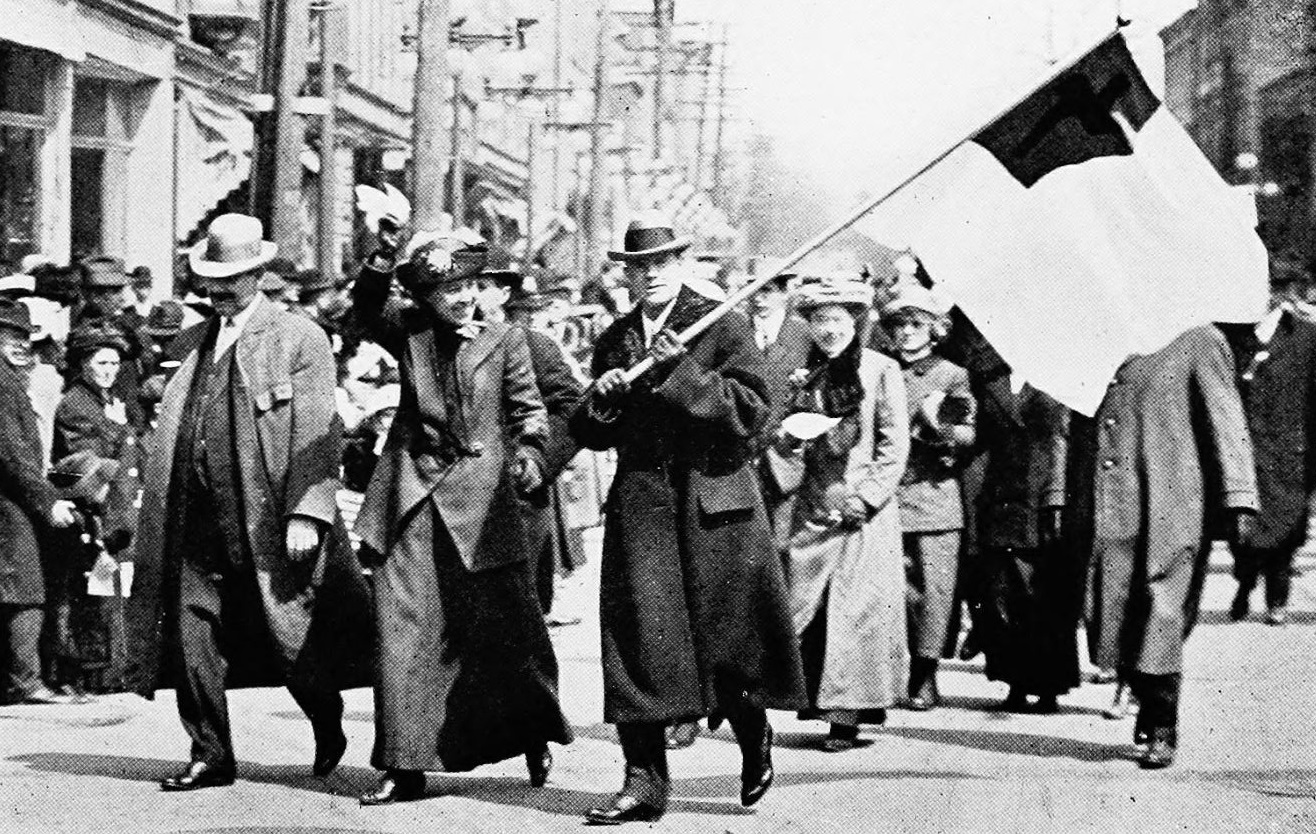 Billy Sunday and his wife Helen, front right, leading 20,000 in a Sunday School parade at Wilkes Barre, Pennsylvania.
Billy Sunday and his wife Helen, front right, leading 20,000 in a Sunday School parade at Wilkes Barre, Pennsylvania.
Lifetime Success
► Over his lifetime it is estimated that Sunday preached to more than 100 million people face-to-face: most without electronic amplification.
► Sunday held meetings in no less than 426 cities. With up to 10 weeks in each city, he preached nightly, and on many days, he preached 2-3 times per day.
► Total number of those who came forward during his invitations to make a profession of their faith in Christ: 1,250,000.
Primary Sources
► Billy Sunday His Tabernacles and Sawdust Trails by T.T. Frankenberg
► The Real Billy Sunday by Elijah P. Brown
► The Spectacular Career of Rev. Billy Sunday by T. T. Frankenberg
► Twenty Years with Billy Sunday by Homer A. Rodeheaver
Secondary Sources
► Billy Sunday: Evangelist of the Sawdust Trail by Rachael Phillips
► Billy Sunday Major League Evangelist by Rachael M. Phillips
► Billy Sunday Speaks by Karen Gullen
► Billy Sunday the Man and His Message by W. T. Ellis
► Five Great Preachers on Heaven by Samuel Gordon
► Hero of the Heartland by Robert F. Martin
► Life and Labors of Rev. Wm. A. (Billy) Sunday by William Sunday
► Preacher: Billy Sunday and Big-Time American Evangelism by Roger A. Burns
► They Gathered at the River by Bernard A. Weisberger
► Winona History Center at Grace College
Video
► Preaching on Alcohol by Billy Sunday
► Open Air Meeting by Part I: by Billy Sunday
► Open Air Meeting Part II: by Billy Sunday
Return to List of Revival Stories
Chet & Phyllis Swearingen:
Office: (260) 920-8248
romans1015@outlook.com
Beautiful Feet
P.O. Box 915
Auburn, IN 46706

